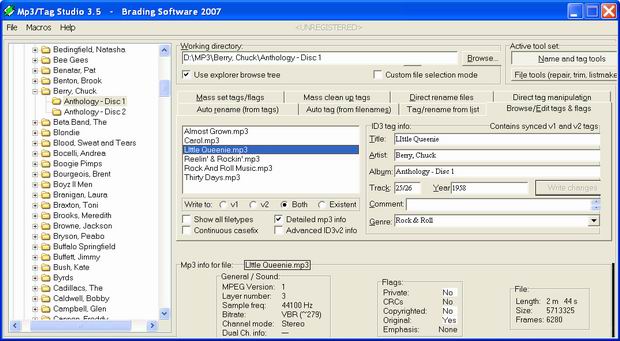dsperber
Board Fan

Group: Members
Posts: 29
Joined: Jan. 2008 |
 |
Posted: Jan. 04 2008,02:02 |
 |
I'd like to report a bug. This is actually a very common bug that I've seen in many many products, but I am still obliged to report it to you:
RMB on Windows desktop -> Properties on menu->
Display Properties dialog -> Settings tab -> Advanced button
General tab -> Display box "DPI Setting"
Windows default is "normal fonts (96DPI)". But with large monitors and very high resolution (e.g. 1152x864, 1280x960, etc.) the displayed size of text characters at "normal fonts (96DPI)" is very very tiny.
Windows provides an alternative of "large fonts (120DPI)", which I have always selected. This provides significantly larger and clearer text characters (i.e. the font looks like it has "more ink" and is thus darker and sharper, and much more readable).
Unfortunately, many software developers generally do not take into account the 120/96 factor when drawing user interface dialogs. Placement of text strings, the amount of room allowed for text strings, controls, etc., all are affected by the 120/96 factor but only a few savvy developers compensate accordingly.
In the case of MP3 Tag Studio 3, unfortunately this very problem is seen. I am attaching two screenshots... one at "normal fonts (96DPI)" and the second at "large fonts (120DPI)".
If you look at the right side of the two windows can see the difference in how your controls are drawn and placed in the two versions. Specifically the right side of the window is chopped off at "large fonts (120DPI)", though fortunately this appears to be mostly cosmetic in that you really haven't chopped off any text or mis-drawn something serious, which is quite common in other products. In fact, the "WRITE CHANGES" button still works... even though the control itself is truncated on the right (it is not truncated at "normal fonts (96DPI)".
Notice that even the painting of the Title Bar of the window is different at the two font sizes. Don't know how to explain it, but it's true.
However what makes your 120/96 problem more serious is that the major functions of the window do not work when "large fonts (120DPI)" is in effect! It cannot be resized (horizontally or vertically).
Furthermore, if I try to change the width of the Explorer tree on the left it will in fact change, but the rest of the window does not resize and redraw accordingly. Instead, the right side of the window remains unaltered but the widened Explorer tree is now partially obscured by the right side of the window which has not moved accordingly. If I make the Explore tree narrower it works, but again the right side of the window remains unaltered.
In contrast, in "normal fonts (96DPI)" mode resizing of the Explorer tree causes the rest of the window to redraw and resize appropriately so that there is never any wasted space and everything is always correctly visible. Also the program window as a whole can be resized horizontally and vertically by dragging the edges. Unfortunately, none of this works in "large fonts (120DPI)" mode. I am forced to temporarily go back to "normal fonts (96DPI)" and re-boot to make changes to the size of the window, and then go back to my "large fonts (120DPI)" and re-boot again to see the results of that change.
I think you'll agree this is undesirable, and broken.
I first started using MP3-Tag Studio back in 2003, and this problem was there EVEN THEN! I even sent an email about it (but did not know about this forum to report bugs), though I got no response. And now, four years later, I see that the problem still exists.
Again, these user-interface issues are very common in many software products. It's as if the developers never even knew (or anticipated in the software) about "normal fonts" vs. "large fonts" or that resulting 120/96 issues need to be supported in user-interface dialog programming.
Hopefully you can address this issue in a future release of the product.
Thanks.
P.S. - sorry for the small attachments, as 51200 is the limit.
Edited by dsperber on Jan. 04 2008,02:09
Attached Image

|













